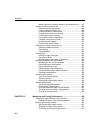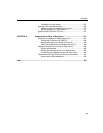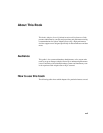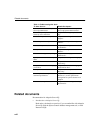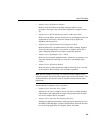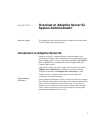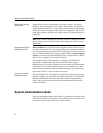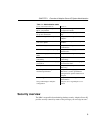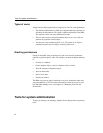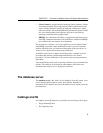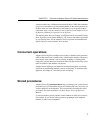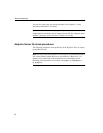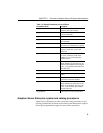
System administration tasks
2
Rapid access to many
data sources
Adaptive Server IQ can integrate data from diverse sources—not just IQ
databases, but other databases in the Adaptive Server family, as well as non-
Sybase databases and flat files. You can import this data into your IQ database,
so that you can take advantage of IQ's rapid access capabilities. You can also
query other databases directly, using Adaptive Server IQ's remote data access
capabilities.
Note Some of these capabilities are currently available on Windows NT only.
See your Adaptive Server IQ Installation and Configuration Guide for more
information.
Data warehousing and
Adaptive Server IQ
Data warehouses are collections of data designed to allow business analysts
to analyze information. They are typically distinct from production databases,
to avoid interrupting daily operations. Data warehouses are often used as data
stores on which to build decision support systems (DSS). A decision support
system is a software application designed to allow an organization to analyze
data in order to support business decision making.
All of Adaptive Server IQ's capabilities are designed to facilitate DSS
applications. A unique indexing system speeds data analysis. Query
optimization gives you rapid responses, even when results include thousands
or millions of rows of data. Concurrent data access for multiple query users,
and the ability to update the database without interrupting query processing,
provide the 24–hour, 7–day access that users expect.
Learning more about
Adaptive Server IQ
This book explains how you manage an Adaptive Server IQ system, and gives
pointers for tuning your system for maximum performance. It is intended for
database administrators, and others who need to understand performance
issues. You may also want to refer to the other documentation described in
“About This Book”:
System administration tasks
Typically, the database administrator (DBA) is responsible for the tasks listed
on the left side of the following table. Look at the right side of the table to see
where these tasks are explained in this or other manuals.



